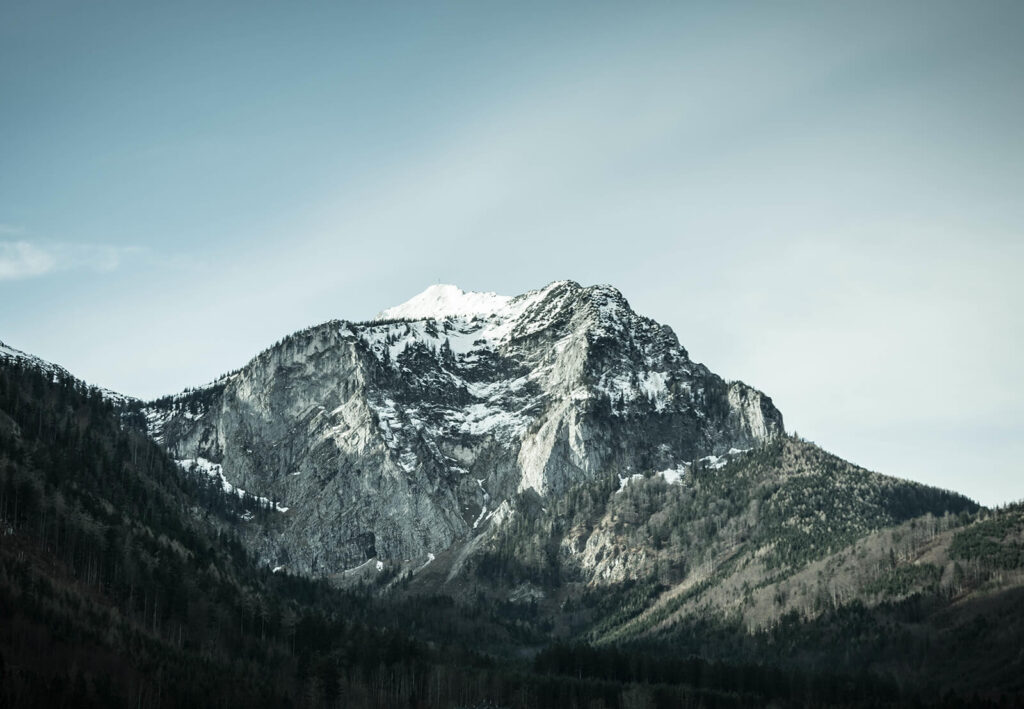
BPSC General Science Question Bank – Physics
BPSC General Science – Physics Question Bank of BPSC Previous Year’s papers for preparation of BPSC Prelims and other Bihar state examinations.
Home » BPSC Study Materials » BPSC Question Bank » BPSC Ancient History Question Bank
BPSC Ancient history Question Bank of BPSC Previous Year’s Papers for preparation of BPSC Prelims and other Bihar state examinations.
1. Which one of the following periods is also known as Chalcolithic age ?
(a) Old Stone Age
(b) New Stone Age
(c) Copper Age
(d) Iron Age
Correct Answer – (c) Copper Age
2. Indus Civilization existed in which among the following ages ?
(a) Prehistoric age
(b) Early historical age
(c) Historical age
(d) Later historical age
Correct Answer – (b) Early historical age
3. Which color was commonly used in the Harappan Pottery ?
(a) Red
(c) Yellow
(b) Blue-gray
(d) Blue
Correct Answer – (a) Red
4. In which among the following Harappan sites, a terracotta figure of ‘plough’ was found ?
(a) Dholavira
(b) Banawali
(c) Kalibangan
(d) Lothal
(e) None of the above/More than one of the above
Correct Answer – (b) Banawali
5. Which of the following was a Harappan port ?
(a) Alexandria
(b) Lothal
(c) Dholavira
(d) Nagapattinam
Correct Answer – ((b) Lothal
6. Who among the following was not associated with the excavation of Harappa and Mohenjodaro ?
(a) R.D. Banerjee
(b) K.N. Dikshit
(c) M.S. Vats
-(d) V.A. Smith
Correct Answer – (d) V.A. Smith
7. Which Mandala of Rig Veda is completely dedicated to ‘Soma’ ?
(a) Seventh Mandala
(b) Eighth Mandala
(c) Ninth Mandala
(d) Tenth Mandala
Correct Answer – (c) Ninth Mandala
8. Boghaz-Koi is important because of which among the following reasons :
(a) It was an important trading center between Central Asia and Tibet
(b) Inscriptions were found which mentioned the names of Vedic Gods and Goddesses
(c) Original Texts of the Vedas were composed here
(d) None of the above
Correct Answer – (b) Inscriptions were found which mentioned the names of Vedic Gods and Goddesses
9. Gayatri Mantra is found in which among the following books ?
(a) Upanishad
(b) Bhagwat Gita
(c) Rig Veda
(d) Yajurveda
Correct Answer – (c) Rig Veda
10. Famous Battle of ‘Ten Kings’ was fought on the bank of the river ?
(a) The Ganges
(b) Brahmaputra
(c) Kaveri
(d) Parushni
Correct Answer – (d) Parushni
11. In which phase, the concept of untouchability was put clearly?
(a) Rigedic phase
(c) Later Gupta phase
(b) Later Vedic phase
(d) Dharmashastra phase
Correct Answer – (d) Dharmashastra phase
12. Where did Mahatma Buddha’s ‘Mahaparinirvana’ take place ? (BPSC – 2005)
(a) Lumbini
(b) Bodh Gaya
(c) Kushinagar
(d) Kapilvastu
Correct Answer – (d) Kapilvastu
13. Gautama Buddha gave his first sermon at which among the following places ? (BPSC – 2015)
(a) Vaishali
(b) Kaushambi
(c) Sarnath
(d) Pawapuri
Correct Answer – (c) Sarnath
14. A Buddhist Council during the reign of Kanishka was held at ? (BPSC – 2005)
(a) Magadha
(b) Pataliputra
(c) Kashmir
(d) Rajgriha
Correct Answer – (c) Kashmir
15. Mahabodhi Temple has been built at Bodh Gaya where ? (BPSC – 2001)
(a) Gautama Buddha was born
(b) Gautama Buddha received enlightenment
(c) Gautama Buddha gave his first sermon
(d) Gautama Buddha passed away
Correct Answer – (b) Gautama Buddha received enlightenment
16. Where is the highest in the world ‘Vishwa Shanti Stupa’ located in Bihar ? (BPSC – 2008)
(a) Vaishali
(b) Nalanda
(c) Rajgir
(d) Patna
Correct Answer – (c) Rajgir
17. Gautama Buddha was elevated to the position of God during the period of who among the following ?
(a) Asoka
(b) Kanishka
(c) Chandragupta Vikramaditya
(d) Harsha
Correct Answer – (b) Kanishka
18. In which among the following states ‘Odantipuri’ Education Centre was situated in ancient India ? (BPSC – 2016)
(a) Bengal
(b) Bihar
(c) Gujarat
(d) Tamil Nadu
(e) None of the above/More than one of the above
Correct Answer – (b) Bihar
19. Who was the founder of Nalanda University ? (BPSC – 2015)
(a) Chandragupta Vikramaditya
(b) Kumaragupta
(c) Dharmapal
(d) Pushyagupta
Correct Answer – (b) Kumaragupta
20. ‘Nav Nalanda Mahavihara’ is famous for ? (BPSC – 2008)
(a) Hsuan-Tsang memorial
(b) Birthplace of Mahavir
(c) Pali Research Centre
(d) Museum
Correct Answer – (c) Pali Research Centre
21. Which one of the following is not common between Buddhism and Jainism ? (BPSC – 2000)
(a) Ahimsa
(b) Indifference to Vedas
(c) Self-mortification
(d) Rejection of Rituals
Correct Answer – (c) Self-mortification
22. Where was Mahavira Swami born ? (BPSC – 2011 )
(a) Kundagram
(b) Pataliputra
(c) Magadha
(d) Vaishali
Correct Answer – (a) Kundagram
23. Mahavira Jain breathed his last at which among the following places ? (BPSC – 2001)
(a) Rajgir
(b) Ranchi
(c) Pavapuri
(d) Samastipur
Correct Answer – (c) Pavapuri
24. The first disciple of Lord Mahavir was ? (BPSC – 2005)
(a) Jamali
(b) Yashoda
(c) Bipin
(d) Prabhas
Correct Answer – (a) Jamali
25. ‘Ajivika’ sect was founded by ? (BPSC – 1994)
(a) Anand
(c) Makkhali Gosala
(b) Rahul Bhadra
(d) Upali
Correct Answer – (c) Makkhali Gosala
26. Who contributes the most in the development of the Bhagavata sect ? (BPSC – 1994)
(a) Persian
(c) Kushan
(b) Indo-Greek people
(d) Gupta
Correct Answer – (d) Gupta
27. Which was the first capital of the Magadha empire ? (BPSC – 2005)
(a) Pratishthan
(b) Vaishali
(c) Rajgriha
(d) Champa
Correct Answer – (c) Rajgriha
28. Who among the following kings had founded Pataliputra? (BPSC – 2000, 2008)
(a) Sisunaga
(b) Bimbisar
(c) Ajatashatru
(d) Udayin
Correct Answer – (d) Udayin
29. In which century did the first Magadha Empire rise ? (BPSC -1997)
(a) Fourth Century B.C.
(b) Sixth Century B.C.
(c) Second Century B.C.
(d) First Century B.C.
Correct Answer – (b) Sixth Century B.C.
30. By whom the first republic of the world was established in Vaishali ? (BPSC – 2008)
(a) Maurya
(c) Gupta
(b) Nanda
(d) Lichchhavi
Correct Answer – (d) Lichchhavi
31. The list of sixteen Mahajanapadas is available in ? (BPSC – 2003)
(a) Mahabharata
(b) Anguttar Nikaya
(c) Chandogya Upanishad
(d) Samyukta Nikaya
Correct Answer – (b) Anguttar Nikaya
32. What was the name of the dynasty of Ajatshatru? (BPSC – 2011)
(a) Maurya
(b) Haryanka
(c) Nanda
(d) Gupta
Correct Answer – (b) Haryanka
33. Which dynasty did rule over Magadha after the Nanda Dynasty ? (BPSC – 2000)
(a) Maurya
(c) Gupta
(b) Shunga
(d) Kushana
Correct Answer – (a) Maurya
34. Who was the founder of the Karnata dynasty ? (BPSC – 2016)
(a) Nanya Dev
(b) Nrsimhadev
(c) Vijaydev
(d) Haridev
(e) None of the above/More than one of the above
Correct Answer – (a) Nanya Dev
35. Who was the last King of the Karnata dynasty ? (BPSC – 2016)
(a) Harisimha
(b) Ramasimha
(c) Matisimha
(d) Shyam Simha
(e) None of the above/More than one of the above
Correct Answer – (a) Harisimha
36. Which one of the following rulers of Magadha was the contemporary of Alexander, the Great? (BPSC – 2000)
(a) Mahapadma Nanda
(b) Dhanananda
(c) Sukalpa
(d) Chandragupta Maurya
Correct Answer – (b) Dhanananda
37. Chandragupta Maurya figures prominently in the book of ? (BPSC – 2004)
(a) Bhasa
(b) Sudraka
(c) Vishakhadatta
(d) Ashvaghosha
Correct Answer – (c) Vishakhadatta
38. Who recognized Sandrokottos as Chandra Gupta Maurya ? (BPSC – 2008)
(a) William Jones
(c) R. K. Mukherjee
(b) V. Smith
(d) D. R. Bhandarkar
Correct Answer – (a) William Jones
39. Kautilya’s Arthashastra deals with the aspects of which among the following ? (BPSC – 2001)
(a) Economic life
(b) Political policies
(c) Religious life
(d) Social life
Correct Answer – (b) Political policies
40. Chandragupta’s palace situated at Pataliputra was mainly made up of which among the following ? (BPSC – 1996)
(a) Bricks
(b) Stones
(c) Woods
(d) Clays
Correct Answer – (c) Woods
41. Who amongst the following Mauryan rulers conquered the Deccan ? (BPSC – 2004 )
(a) Ashoka
(b) Chandragupta
(c) Bindusara
(d) Kunala
Correct Answer – (b) Chandragupta
42. The Inscription which proves Chandragupta’s control over western India is ? (BPSC – 1994)
(a) Kalinga Rock Inscription
(b) Girnar Rock Inscription of Ashoka
(c) Junagarh Rock Inscription of Rudradaman
(d) Sopara Rock Inscription of Ashoka
Correct Answer – (c) Junagarh Rock Inscription of Rudradaman
43. A Buddhist Council during the reign of Ashoka was held at which among the following places ?
(a) Magadha
(b) Patliputra
(c) Samastipur
(D) Kashmir
Correct Answer – (b) Patliputra
44. Language used in the inscriptions of Ashoka was which among the following ? (BPSC – 2000)
(a) Sanskrit
(b) Prakrit
(c) Pali
(d) Hindi
Correct Answer – (b) Prakrit
45. Who first deciphered the Brahmi Script ? (BPSC – 2008)
(a) A. Cunningham
(b) A.H. Dani
(c) Buhler
(d) James Prinsep
Correct Answer – (d) James Prinsep
46. In how many categories did Megasthenese divide the Indian Society ? (BPSC – 2003)
(a) Four
(c) Six
(b) Five
(d) Seven
Correct Answer – (d) Seven
47. The description of the administration of Pataliputra is available in which among the following ? (BPSC – 2003)
(a) Divyadana
(b) Arthashastra
(c) Indica
(d) Ashoka’s inscriptions
Correct Answer – (c) Indica
48. The most famous center of learning during the Mauryan period was ? (BPSC – 2005)
(a) Vaishali
(b) Nalanda
(c) Taxila
(d) Ujjain
Correct Answer – (c) Taxila
49. The last Mauryan emperor was ? (BPSC – 2008)
(a) Jaloka
(b) Avanti Verma
(c) Nandi Vardhana
(d) Brihadratha
Correct Answer – (d) Brihadratha
50. Which inscription tells about the various achievements of Rudradaman-I ? (BPSC – 2011)
(a) Junagadh
(c) Nasik
(b) Bhitari
(d) Sanchi
Correct Answer – (a) Junagadh
51. Which dynasty ruled over India after the Shunga dynasty ? (BPSC – 2001)
(a) Satavahana
(b) Kushana
(c) Kanva
(d) Gupta
Correct Answer – (c) Kanva
52. Art of Gandhara style flourished during the reign of ? (BPSC – 1992)
(a) Kushans
(b) Guptas
(c) Akbar
(d) Mauryas
Correct Answer – (a) Kushans
53. King Kharavela is related to which among the following ?(BPSC – 1999, 2016)
(a) Pillar inscription of Girnar
(b) Pillar inscription of Junagarh
(c) Hathigumpha inscription
(d) Sarnath inscription
Correct Answer – (c) Hathigumpha inscription
More questions are coming soon. Join us on Whatsapp for latest updates: Join CivilsCracker on Whatsapp

BPSC General Science – Physics Question Bank of BPSC Previous Year’s papers for preparation of BPSC Prelims and other Bihar state examinations.

BPSC Indian Geography Question Bank of BPSC Previous Year’s papers for preparation of BPSC Prelims and other Bihar state examinations.

BPSC Modern history Question Bank of BPSC Previous Year’s papers for preparation of BPSC Prelims and other Bihar state examinations.

BPSC Medieval history Question Bank for preparation of BPSC Prelims and other Bihar state examinations.
We are adding new Notes, Chapterwise MCQs, Quizzes, Previous Years Questions everyday
We are adding new Notes, Chapterwise MCQs, Quizzes, Previous Years Questions everyday